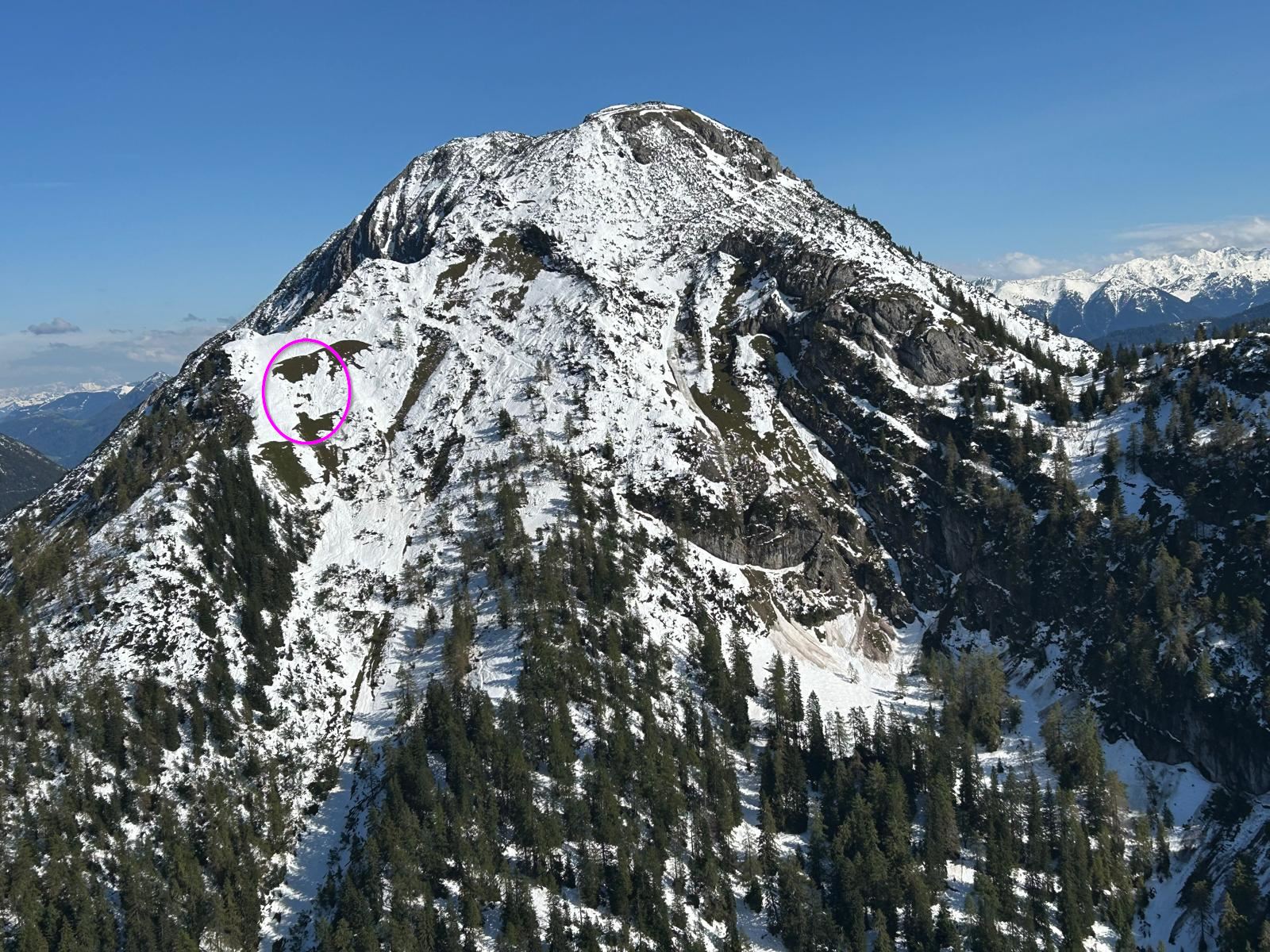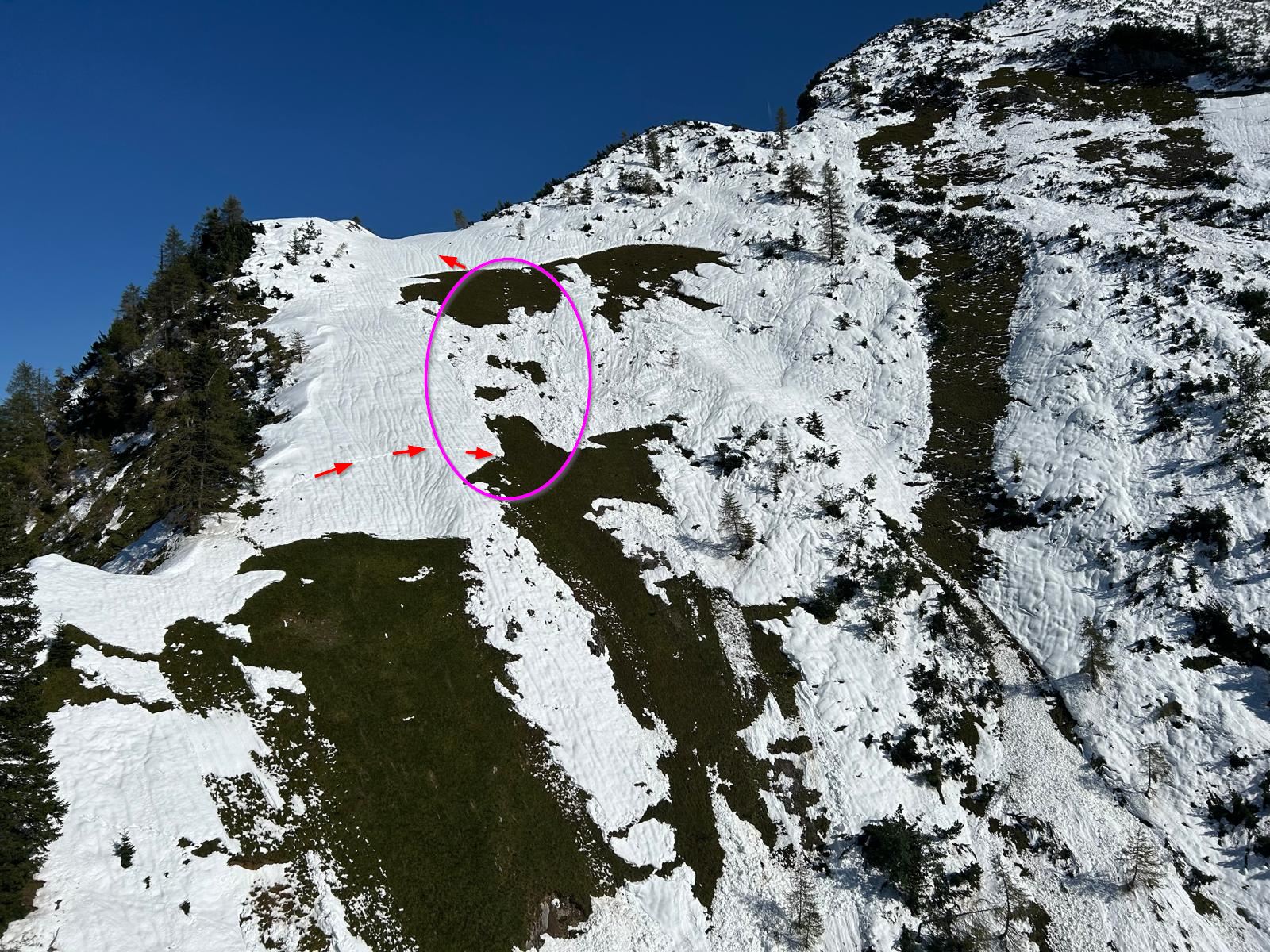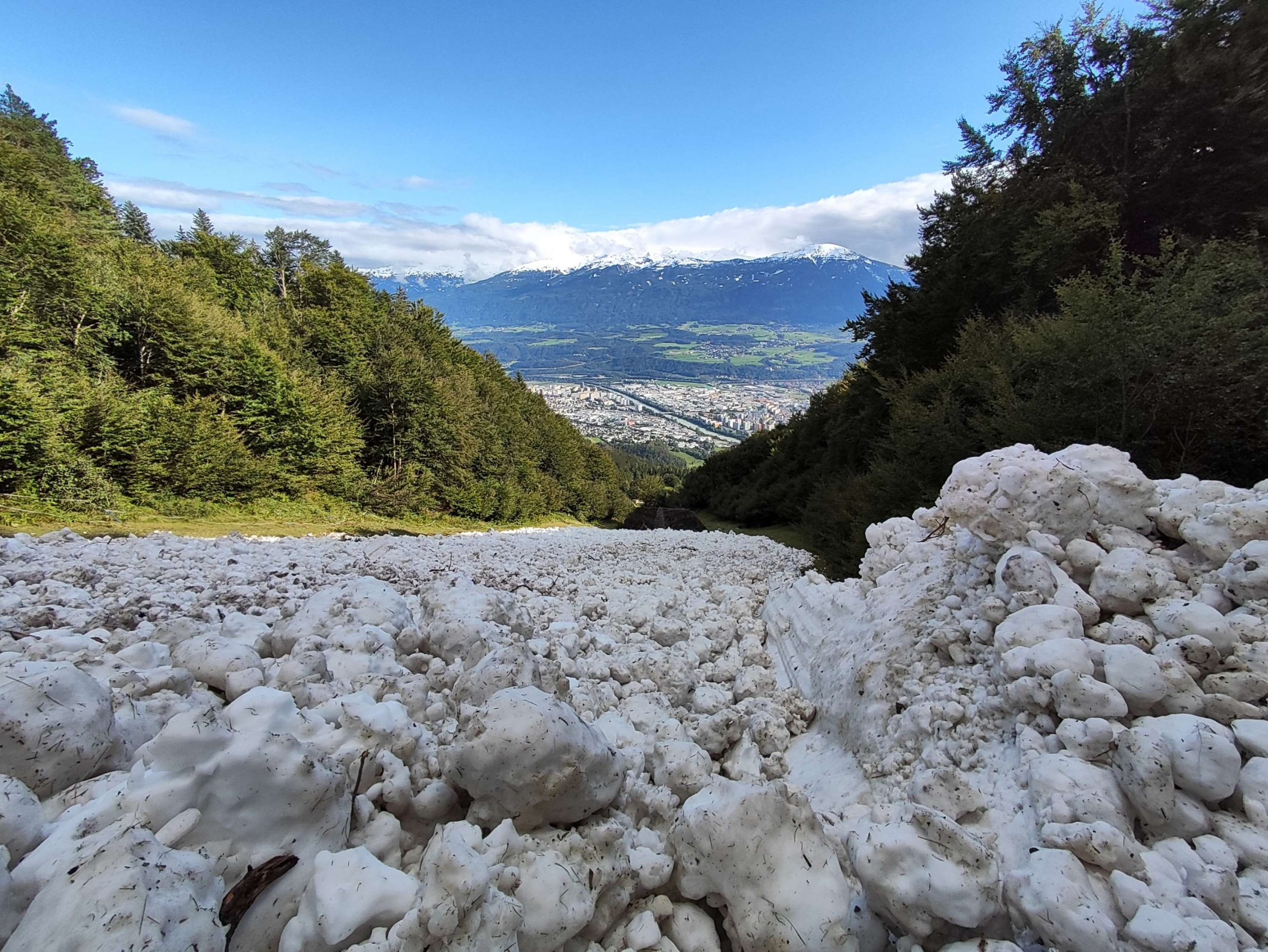Just as expected, since the snowfall of last week numerous glide-snow avalanches have released on steep grass-covered slopes. In the major areas of precipitation, sportively active people need to maintain great heed of possible dangers. Caution: in isolated cases avalanches can plummet down to green zones.
The peril of glide-snow avalanches endangers hikers above all else
After last weekend and the days immediately following proved to be moist and cool, all-in-all rather unpleasant, the weather in coming days promises to be mild and sunny. In other words, perfect hiking weather. The subject of avalanche danger needs to be considered in all touring plans, particularly with regard to glide-snow avalanches. A relatively harmless avalanche incident on the Bärenkopf in the Karwendel yesterday, Wednesday, 18.09 (see below), and a fatal avalanche incident in nearby Salzburg on Tuesday, 17.09, bear witness to the dangers which must not be underestimated.
Particularly in those regions where there has been the most snowfall over the last 10 days, isolated naturally triggered glide-snow avalanches continue to be possible also over the weekend. They can in some cases grow to large size. However, even small-sized glide-snow avalanches can sweep along persons are cause other injuries.
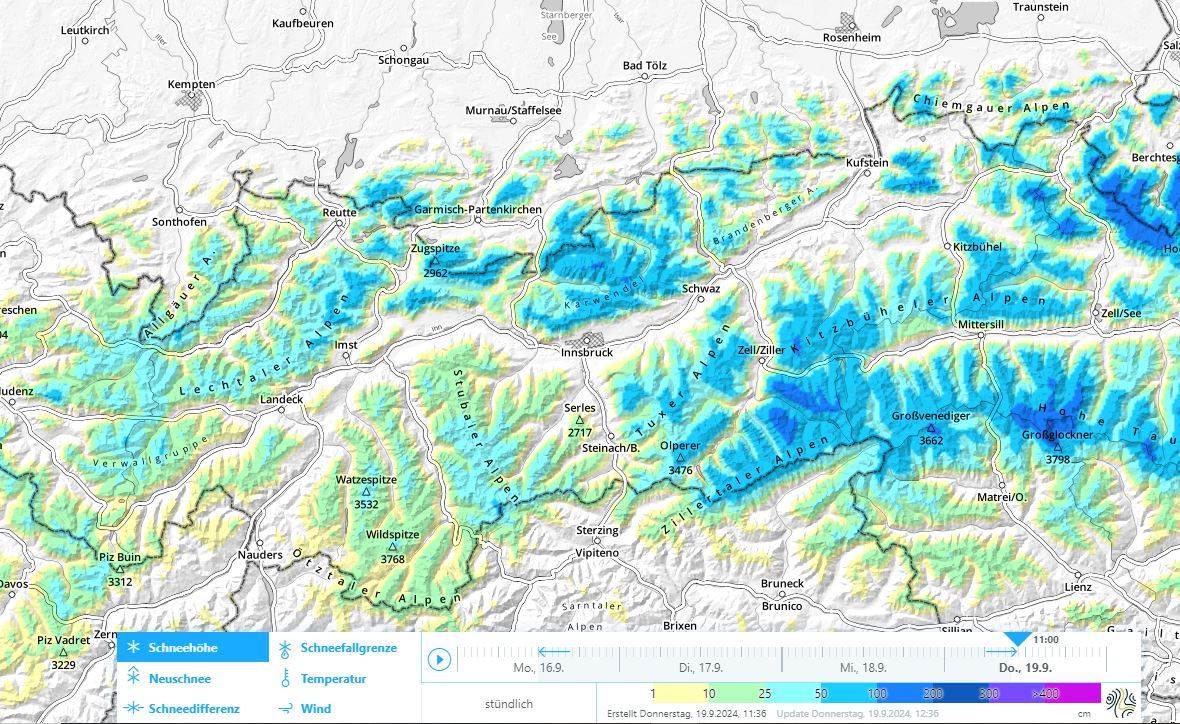
Even in the phase of tour planning, you need to consider whether here are potential starting zones of avalanches above your hiking trail. In order to establish that, Webcambilder as well as information from locals (e.g. refuge hosts) and maps are a great help.
On the hike itself it is essential to keep an eye out for glide snow cracks so that the danger zones can be circumvented or avoided. In steep gullies, avalanches can plummet all the way down to green zones in isolated cases.
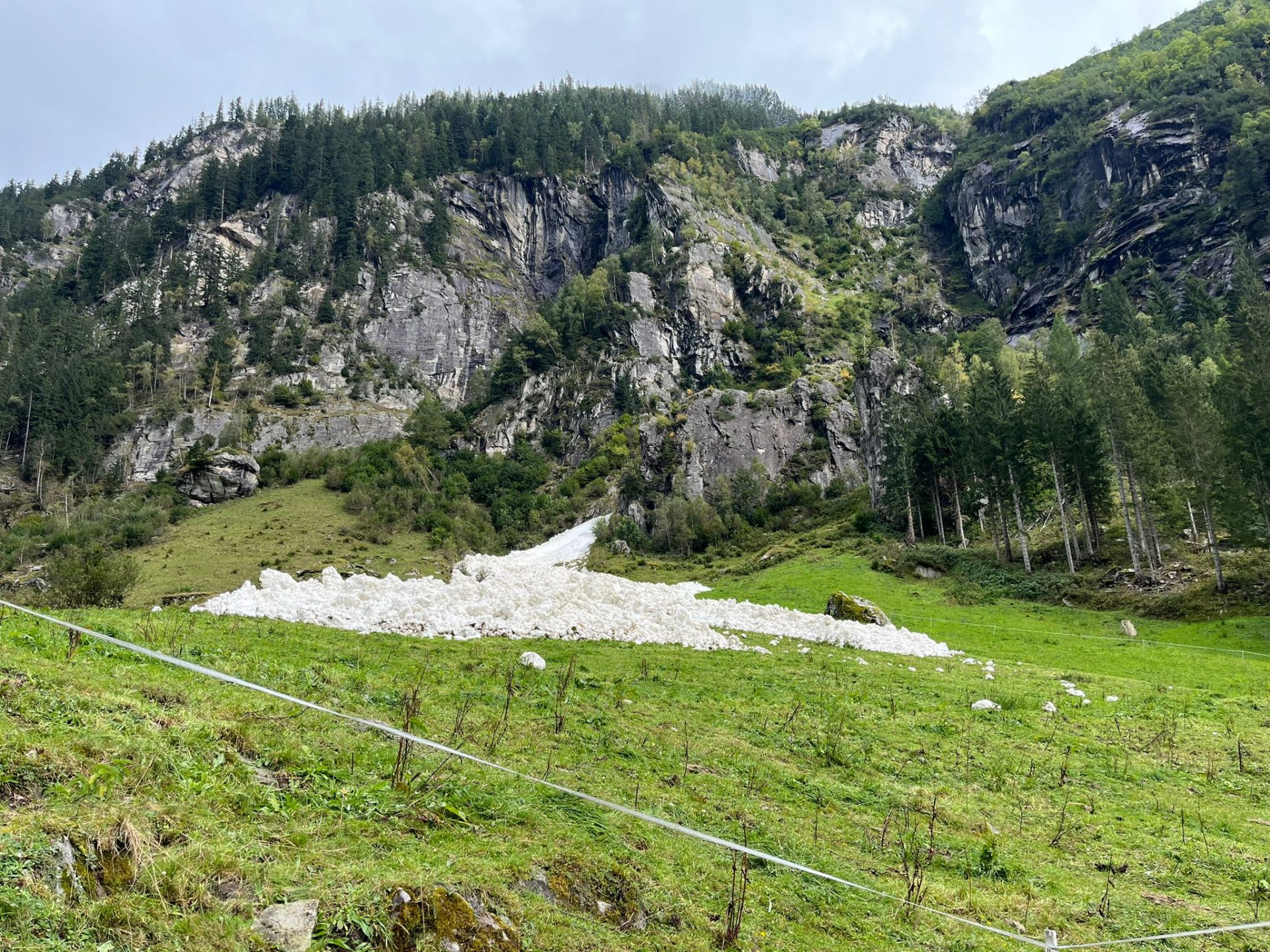
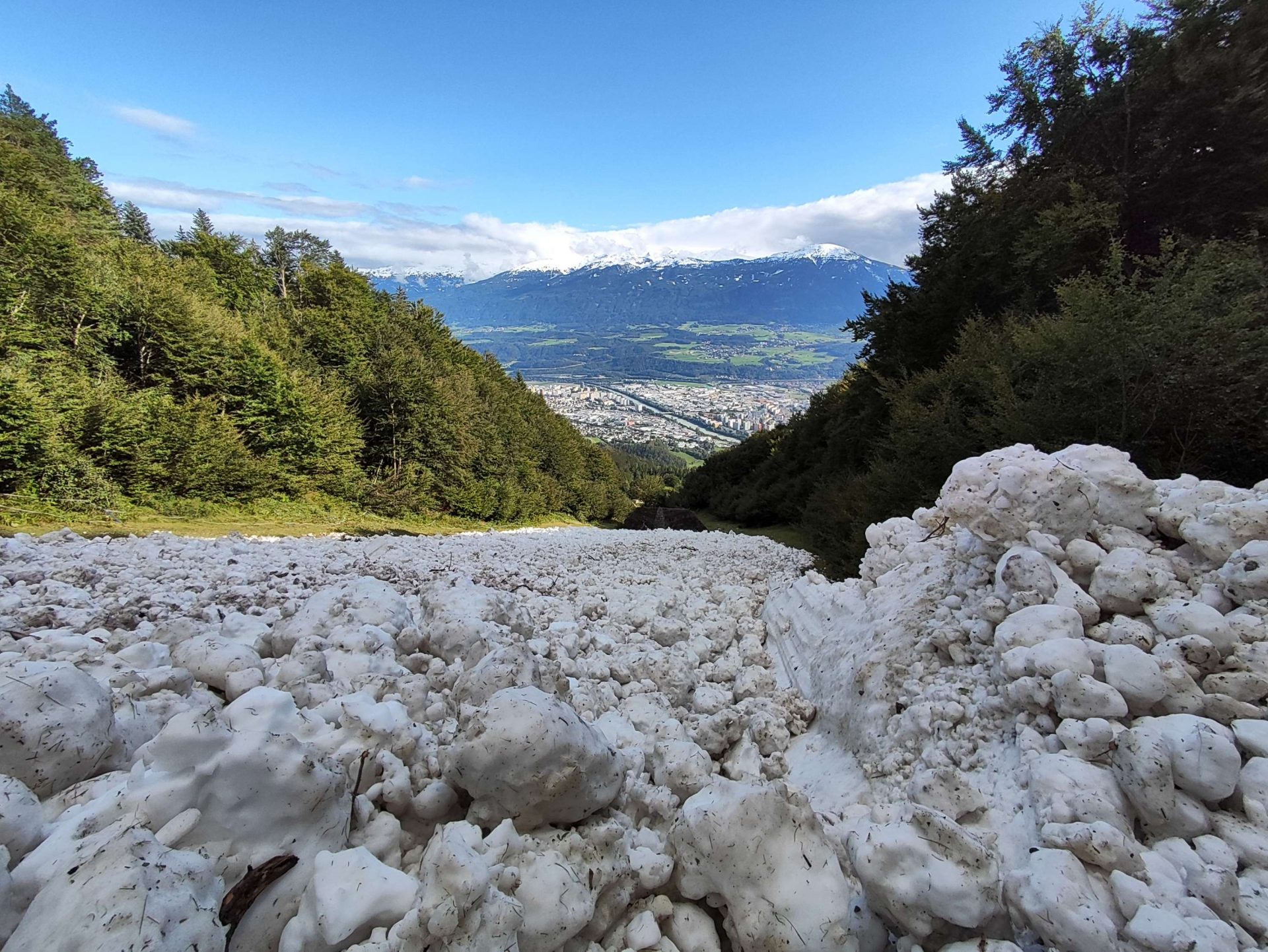
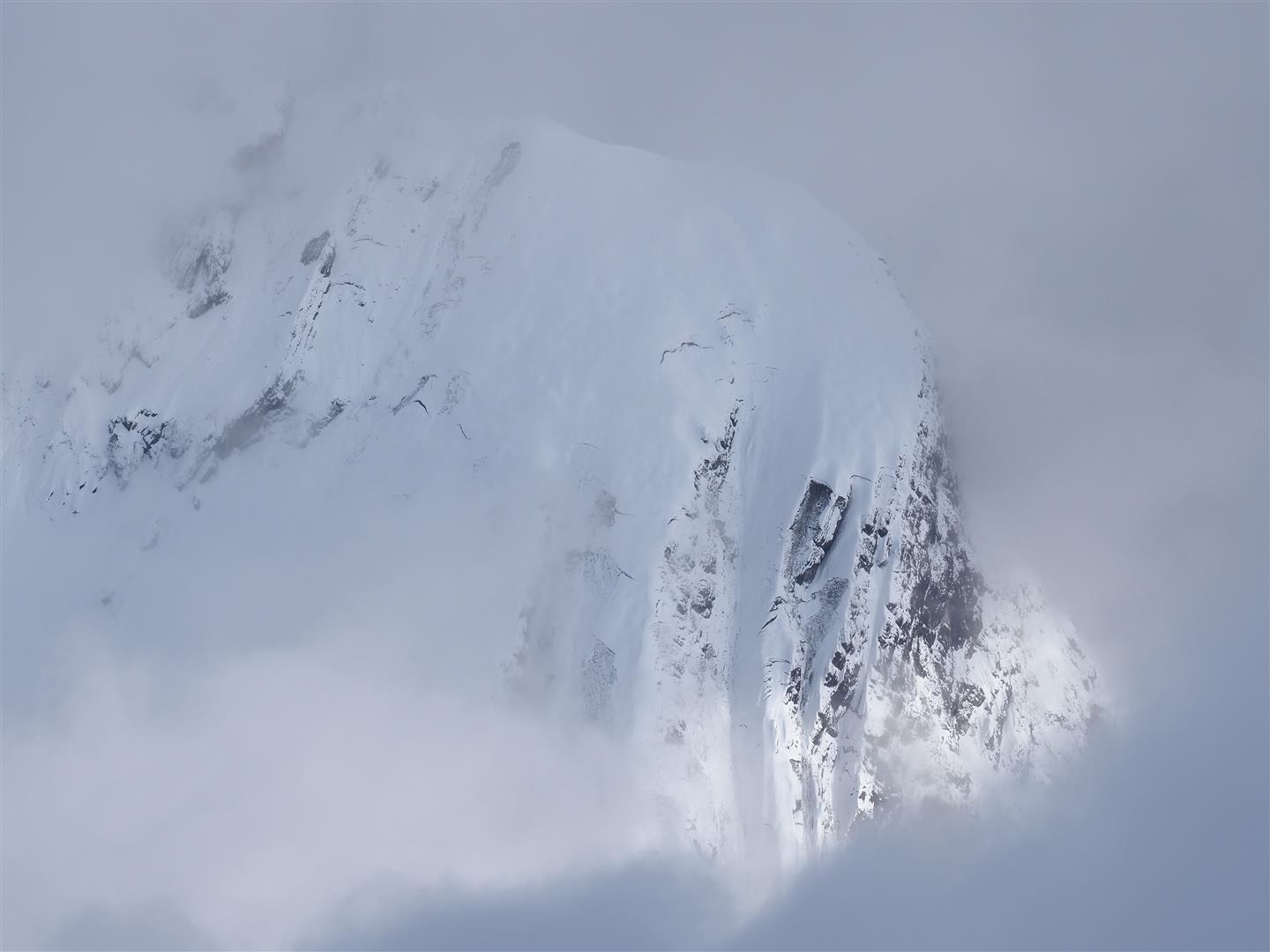
Outlook
Gradually receding gliding snow activity and increasingly bare slopes
Until Monday, 23.09, the pleasant weather will persist, although on Monday the southerly foehn winds will intensify somewhat and usher in a swath of different weather. From today’s point of view, changeable conditions are in the offing. A renewed warning of coming winter, following the pattern of the last few days, is not in sight at the moment. Temperatures will remain mild, the freezing level significantly above 2500m.
On the basis of this, we believe that gliding snow activity will recede further over the next few days and intermediate altitudes, as well as south-facing slopes, will become bare of snow before our eyes up to higher altitudes.
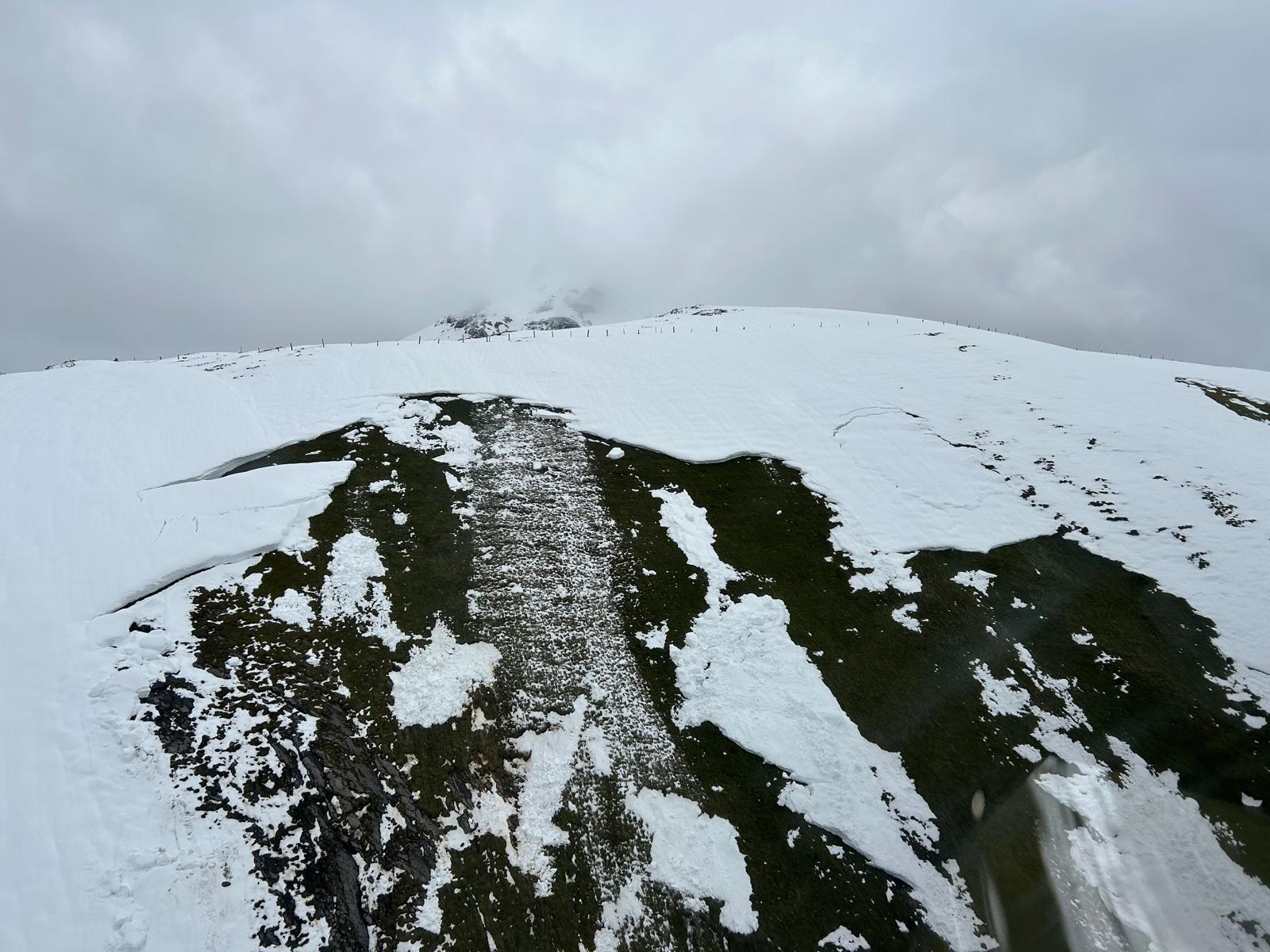
Review
High avalanche activity in places, particularly from glide-snow and loose-snow avalanches
The (temporary) improvement in weather on Sunday, 15.09, permitted us, in the course of investigating the avalanche incident on the Binsalm (see below) in collaboration with the airbourne police, a view into the avalanche situation from the air. All in all, the anticipated (and announced, in the blog) avalanche situation was confirmed. In particular, high glide-snow avalanche activity was impressive, although not surprising due to the large amounts of snowfall and the warm ground upon which it fell.
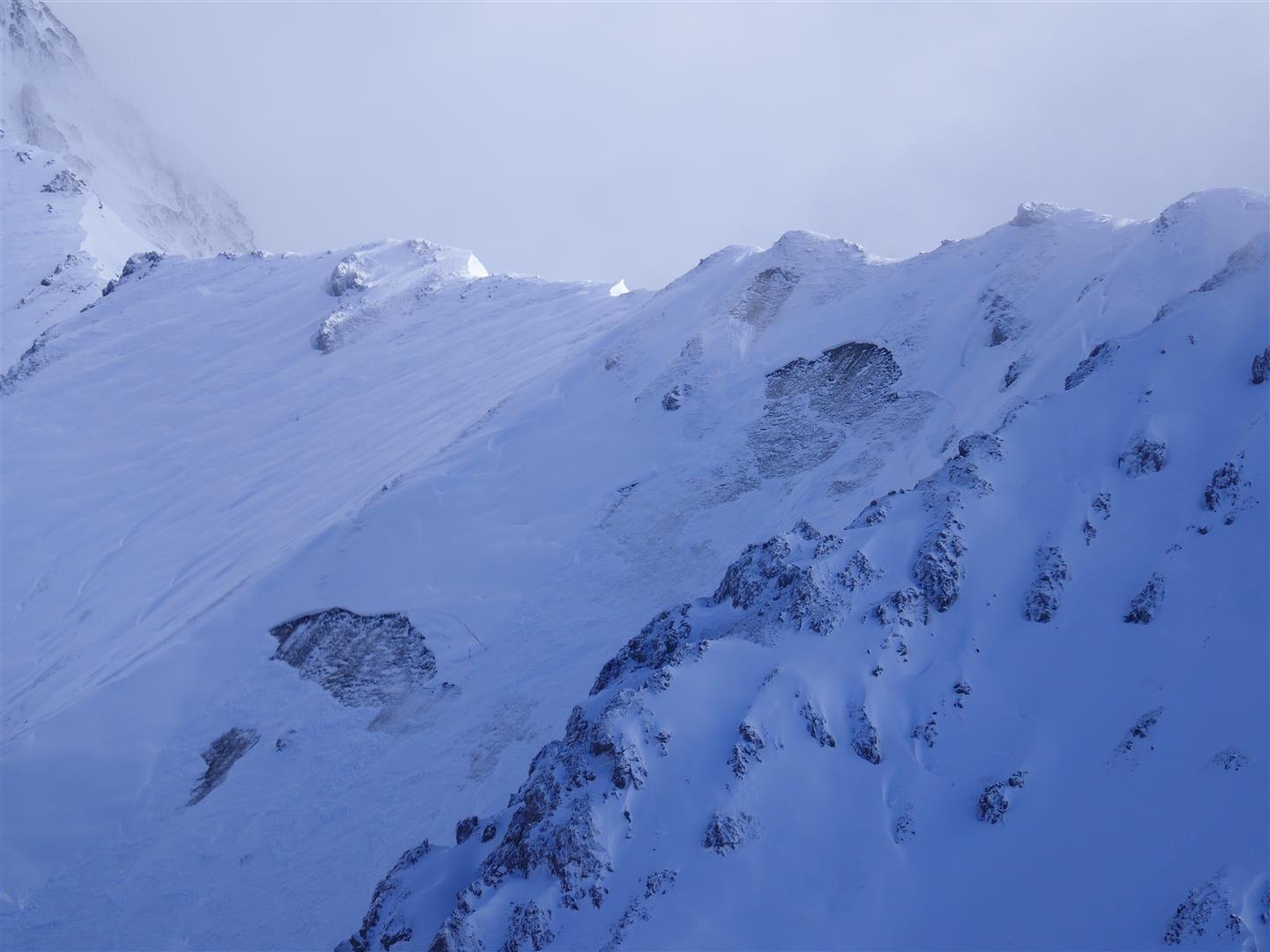
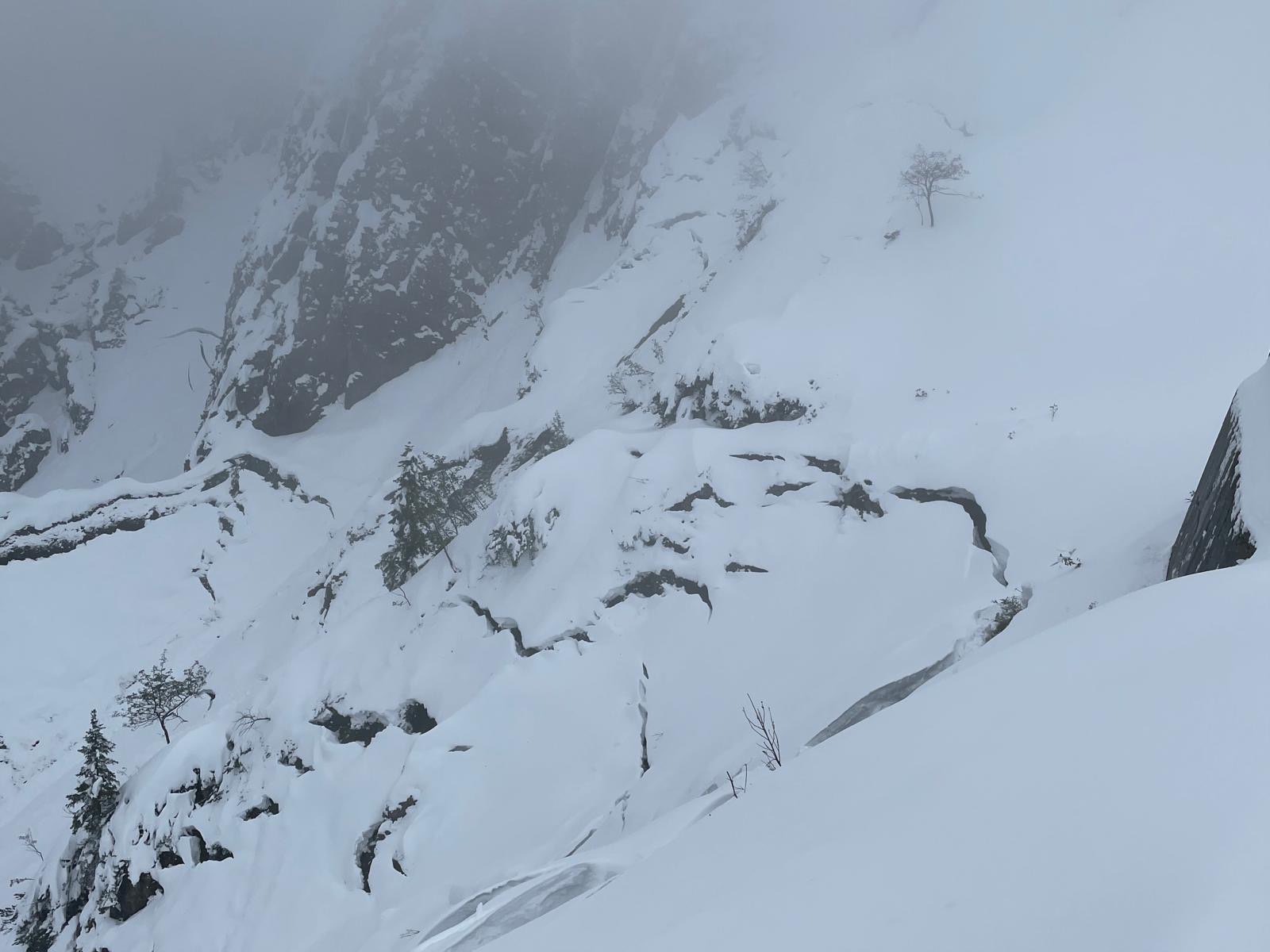
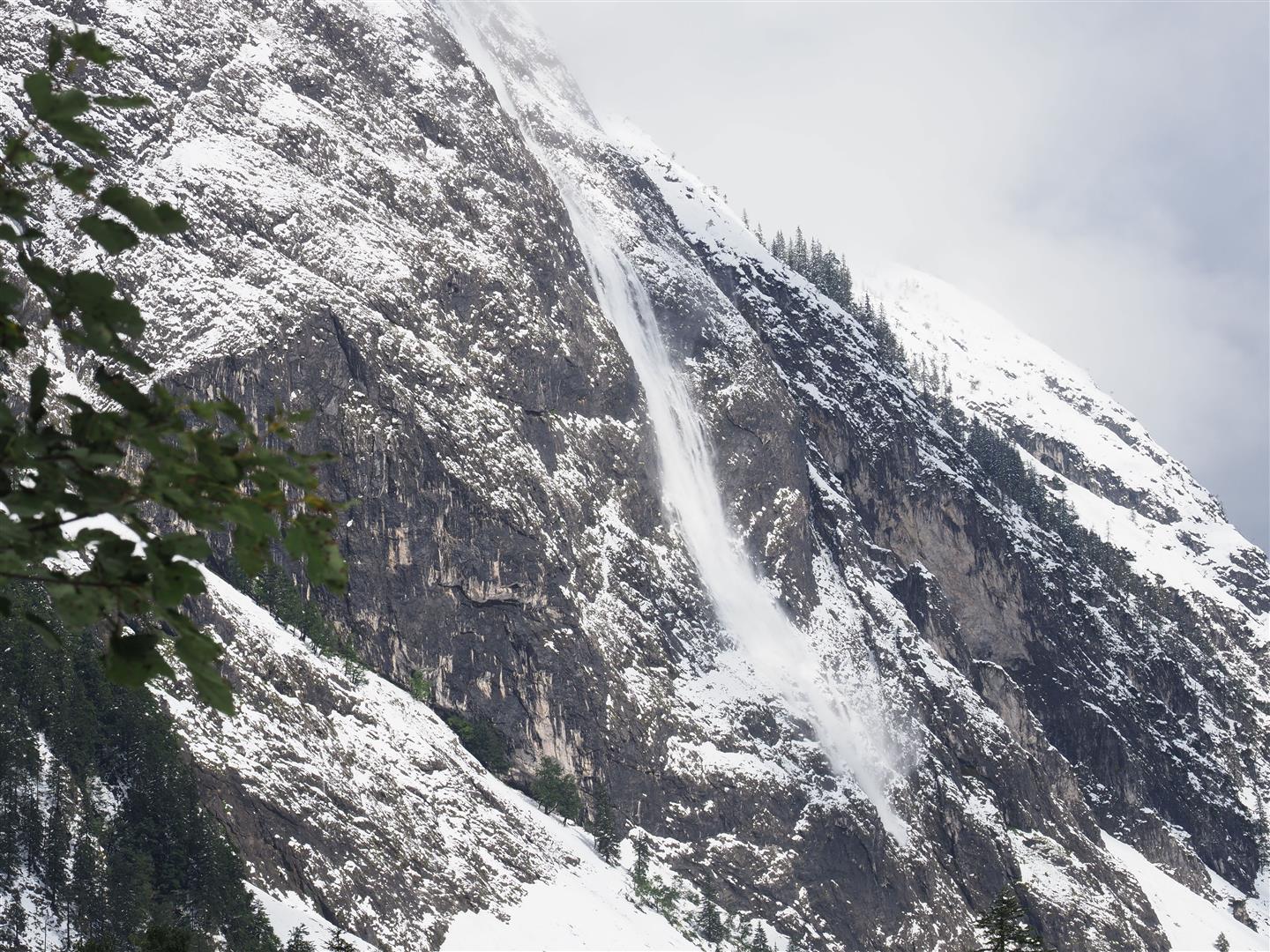
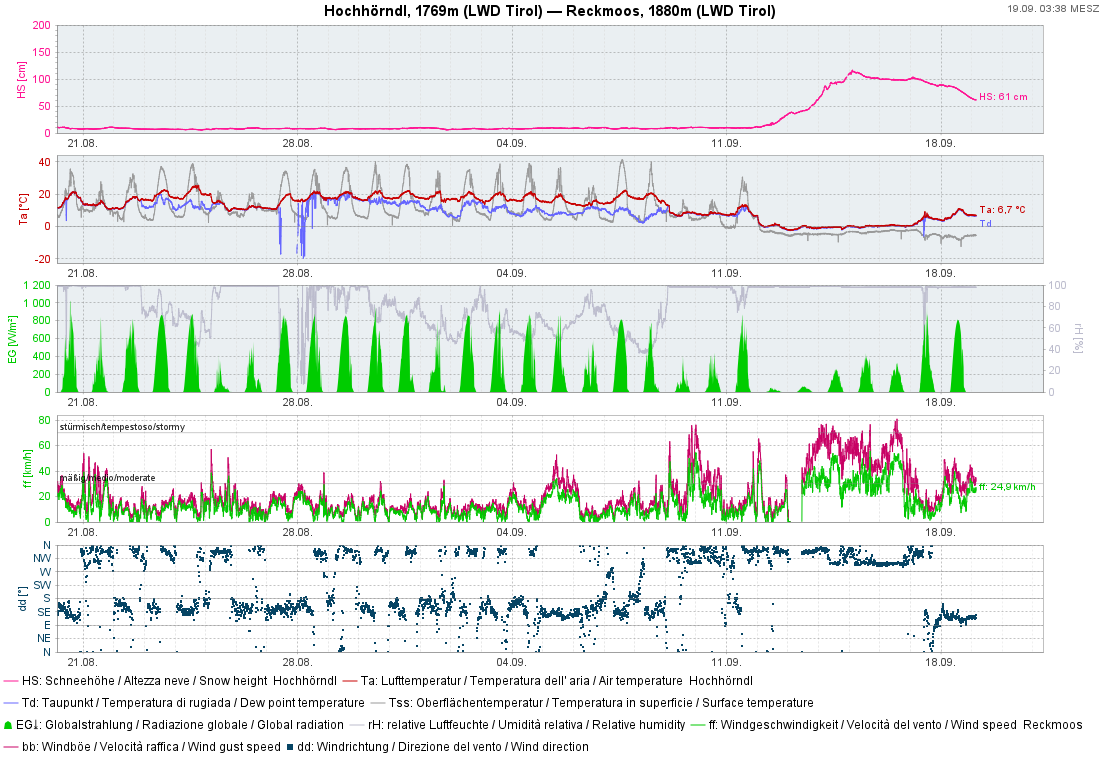
Buried person near Binsalm was dug from the snow today, 19.09, dead.
As already reported in the last blog, the search for the missing person initially had to be broken off, due to the overly dangerous situation for the search-and-rescue team. After a precise situation analysis, the search was continued today, 19.09. The missing person was found, dead, in early morning.
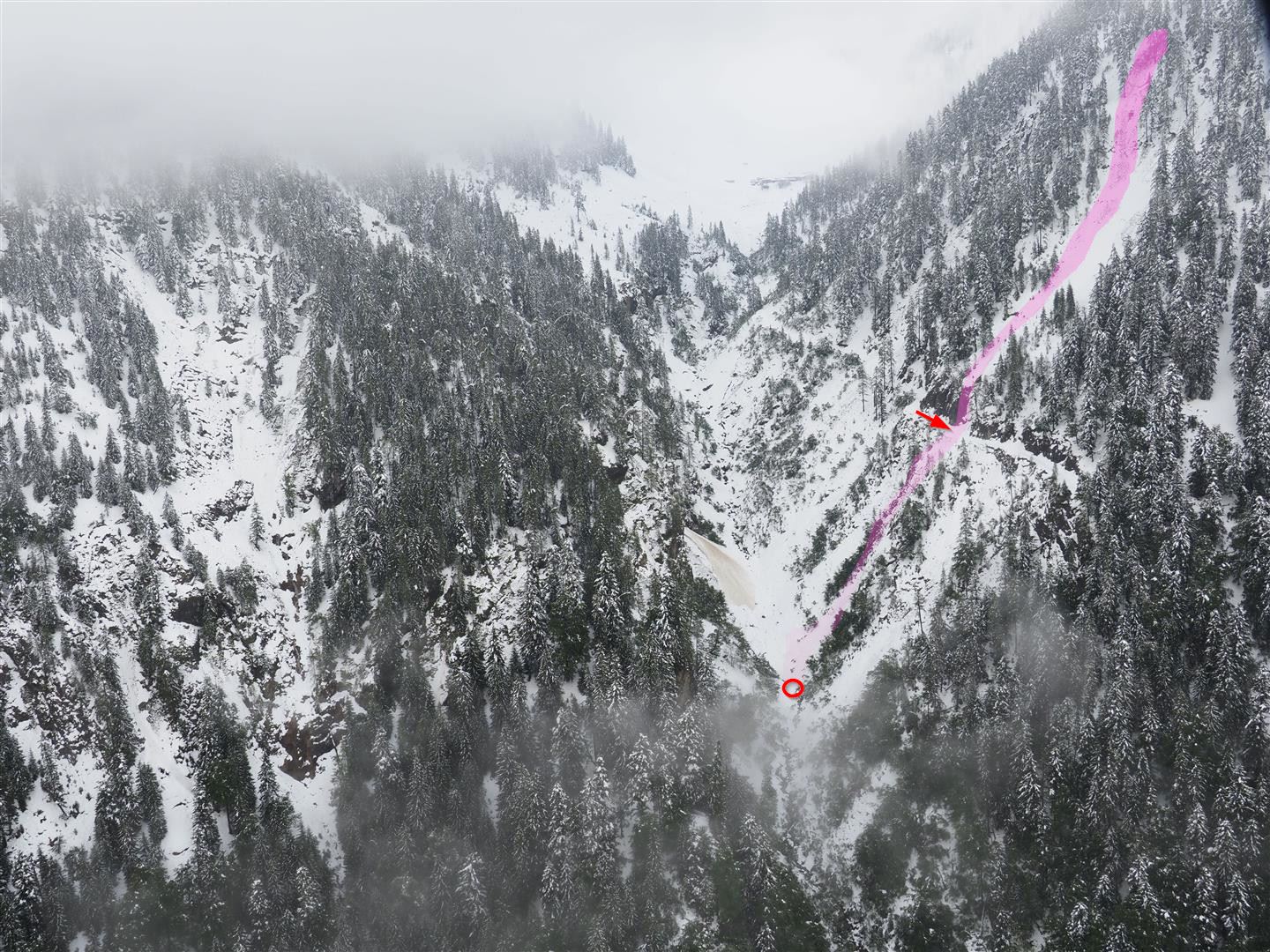
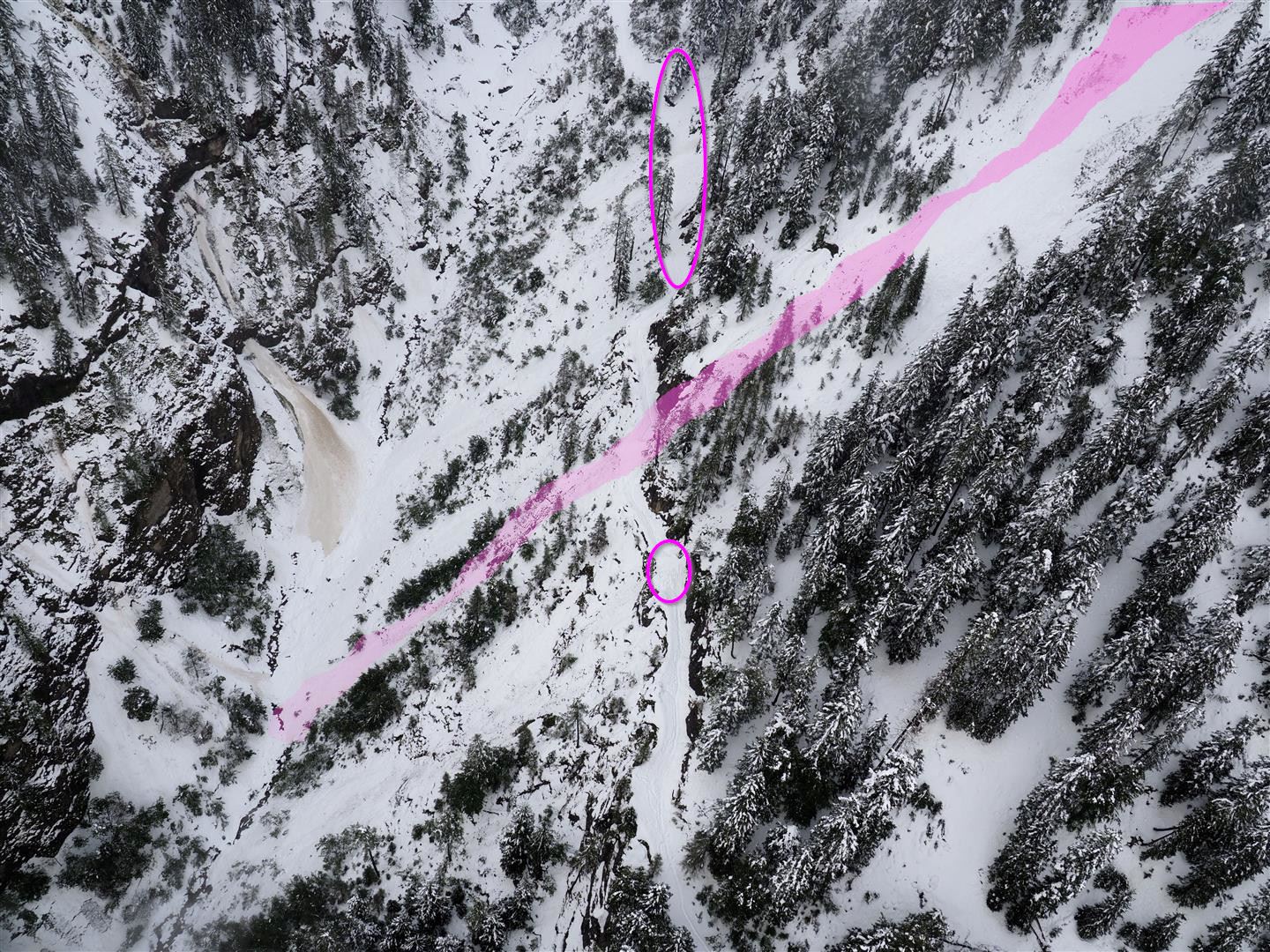
Avalanche incident Bärenkopf
Yesterday, Wednesday 18.09, two persons were caught in a naturally triggered glide-snow avalanche below the Bärenkopf (1991m) in the eastern Karwendel, then swept along for about 10 to 15 metres and subsequently partially buried in snow. They escaped without injuries. The avalanche incident occurred on the same slope where a young person was caught by an avalanche and killed on 9 April this year (see Blog).
